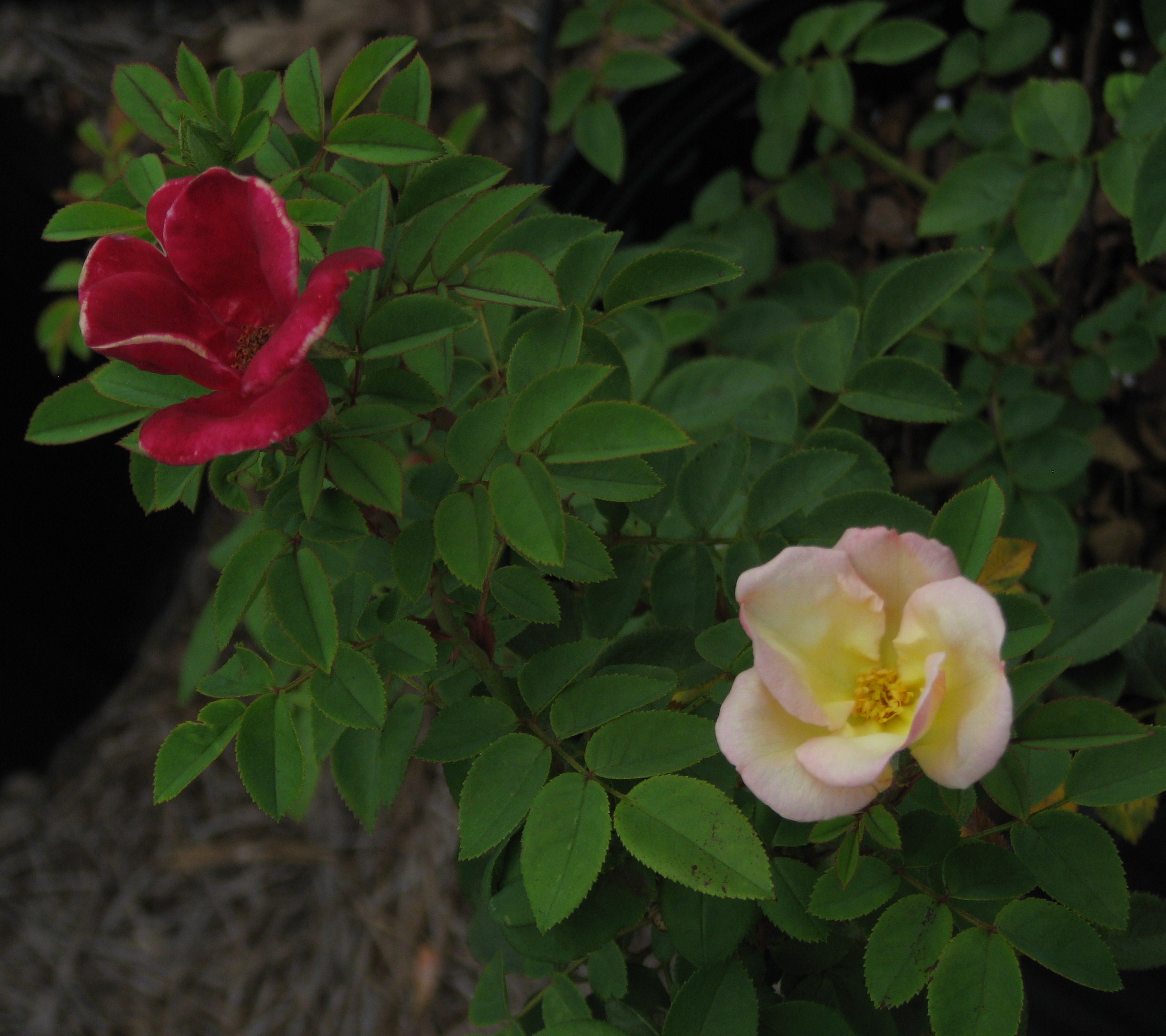Title: “Mapping a Novel Black Spot Resistance Locus in the Climbing Rose Brite EyesTM (‘RADbrite’)”
See:
Title: “Mapping a Novel Black Spot Resistance Locus in the Climbing Rose Brite EyesTM (‘RADbrite’)”
See:
We are excited this paper was accepted and will be in print soon. Brite EyesTM has a unique black spot resistance gene in it. Brite Eyes is tetraploid and has one copy of the allele for this gene that confers resistance and transmits it to 50% of its babies. There is one black spot race of the ~13 races in the collection that infect Brite Eyes, but this gene confers major gene resistance to all the others.
Wow. Double Wow. Forty years have passed since Peter Semeniuk released the Spotless series. Great to know that his efforts are yielding dividends. I remember at the time that the spotless roses were not well received commercially. Kudos to Bill Radler for carrying on with them. I wonder to what degree they contributed to the success of Bill’s roses.
Your tax dollars at work!
Thank you Don for the update. From the patent the male parent is listed as Abraham DarbyTM for Brite EyesTM. Hmmm, so maybe this resistance gene that we characterized on chromosome 5 could actually be from a rugosa.
Brite Eyes has been good rose for me so far, thought not so hardy as I’d like. I was surprised that both it and High Voltage froze nearly to the ground with a -10 F chill a couple nights. Reasonably fertile, tested only as female so far. Only problem is that it tends to singleness and the pale center, brighter outer edges pattern in offspring. For something that shifts color during maturation it is nice, but I’ve not gotten a straight clear yellow from it in a number of seedlings over a few years, with a range of yellow parents. I’ll try to dig up some more specific numbers on how many seeds, how much germination and whether I’ve kept seedlings as promising. The data is in a notebook but it’s late at night now.
Sorry if this has been discussed already. Why is there a difference in pollen parent, from the one that’s listed in the patent and the one listed on HMF?
I’ve found Brite Eyes to be resistant enough that I use it for breeding purposes.
Rob,
This sort of thing happens now and again, though I can’t explain why. I’ve even seen a couple of cases where a breeder gives slightly different lineages for one of his own.
Will Radler discusses some of his breeding lines in the HMF comments for ‘Morning Magic’.
Karl
Thank you for sharing the link Karl.
Am I missing something? In that discussion Bill seems to let his statement stand that Bright Eyes is Radtee x Spotless Gold, and simply clarifies the ancestry of Radtee in his final post in response to Pat’s request that he clarify the lineage of Bright Eyes.,
Don’t have much of interest to report on Brite Eyes. Only one seedling so far has made it into my book of numbered plants. That was a yellow single with a red edge that develops in sun. I do have one or two seedlings each with Austrian Copper pollen or R pomifera pollen. Waiting for those to bloom. At least one seedling from a cross using Bulls Eye pollen, good enough to cross again trying to get the blotch to grow. That the various seedlings survived in a no-spray garden indicates that the B.S.resistance is adequate. Germination with most pollen sources is around 50 % though a few gave no seedlings and one reached > 2/3. None of these were big progenies (say 35 seeds at best) so I can’t talk real statistics.
Bloom production on Brite Eyes is OK, not as good as Music Box but better that High Voltage with all 3 growing side by side in a reasonably watered front garden. Tends to grow rather tall with clustered flowers on stout thorny canes. Blooms until hard freeze. Blooms earlier than Music Box and HV by a few days.
I have gotten a number of healthy OP seedlings from Brite Eyes. 1st is a nice semi-double solid yellow, I’m hoping petal count will increase as the plant matures, 2nd is a medium pink double that looks a little like Belinda’s Dream, and 3rd is an extremely phototropic single that reminds one of Mutabilis. Starts cream and turns to a rust-red. The pink seedling may have the same strong resistance to black spot as Brite Eyes - don’t have a good photo of it

.

Stephen
It is amazing the bloom color diversity possible through Brite EyesTM. The degree of color change in your phototropic seedling is amazing Stephen.
Both are very nice looking Stephen. Nice yellow there.
I especially like the yellow. Does it keep its color better than Carefree Sunshine and Carefree Sunshine? Fading is the thing that’s gotten me with those as parents. No duration of bright yellow before it goes to white in OP and many crosses.
So far my best yellows come from First Impression and Soeur Therese as pollen parent. Just this fall I found one of the latter where the female parent was (Goldbusch self x RKO) x S.T. Holds petals, no B.S, keeps color until the end, about a week in cooler weather. Now to see if it is winter hardy enough, and prolific enough bloomer to matter.
It does fade some - especially in mid-summer. I just potted it up into a #7 gal container, perhaps when cut and brought inside the yellow will retain its saturation. I would venture that it’s fade factor is similar to Carefree Sunshine but less than Limoncello. I have a Yellow Brick Road seedling that fades to a lesser extent.
Stephen
With such disease resistance, I wonder why none of the Spotless series are available.